|
Advertisement / Annons: |
Project:
|
Content: |
1. Astronomy photography with a Pentax SMC 67 165 mm f/2.8 lensNow I was very curious to do a simple test of my medium format Pentax 67 lens. I done that many years ago but didn't have very good control of the focus, now with a DSLR camera with live view I think it should work better. I performed this test from my balcony where I have very strong light pollution. But still it show something that can give me information about the value of this lens when doing astrophotographing. 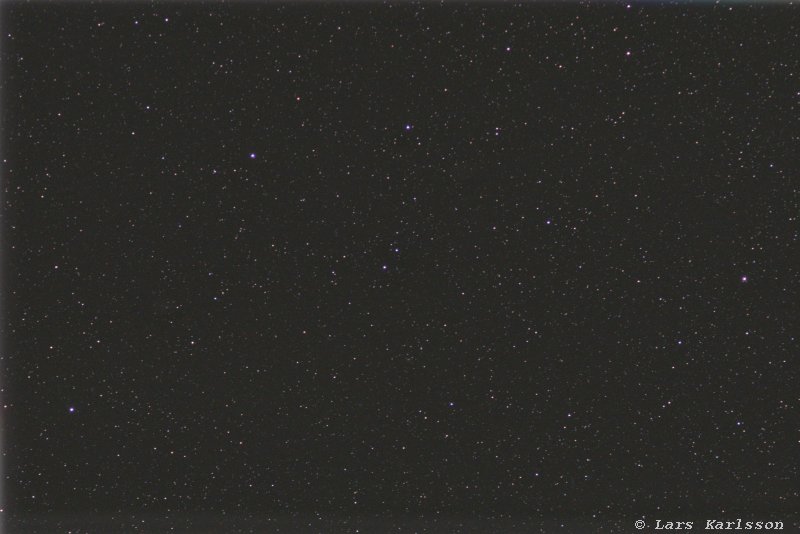 (click on the image to get a full resolution photo in a new window)
(click on the image to get a full resolution photo in a new window)
This photo is a stack of 28 x 30 seconds exposures at ISO 800. Pentax SMC 67 165 mm f/2.8, aperture set fully open to f/2.8. Flat calibrated, level adjusted, cropped a little and a high gamma, no more. I couldn't polar align the mount because I don't see the polar star from the balcony. Take a look at the high resolution photo (click on the image), as you see, not too bad. The thin shadow at the bottom is from the DSLR camera's mirror. I noticed that there was no problem to reach the infinity focus, that saved me a lot of problem. I think the focus is set at the green spectra, it looks to be that when examine the profiles of the stars. Wikipedia has more information about the Pentax 67 medium format camera system:
A lens of this old construction normally has problem to focus the red and blue spectra at the same time as the green.
|
2. Analyze of the raw imageThese analyzes has been done with the tool Fitswork. 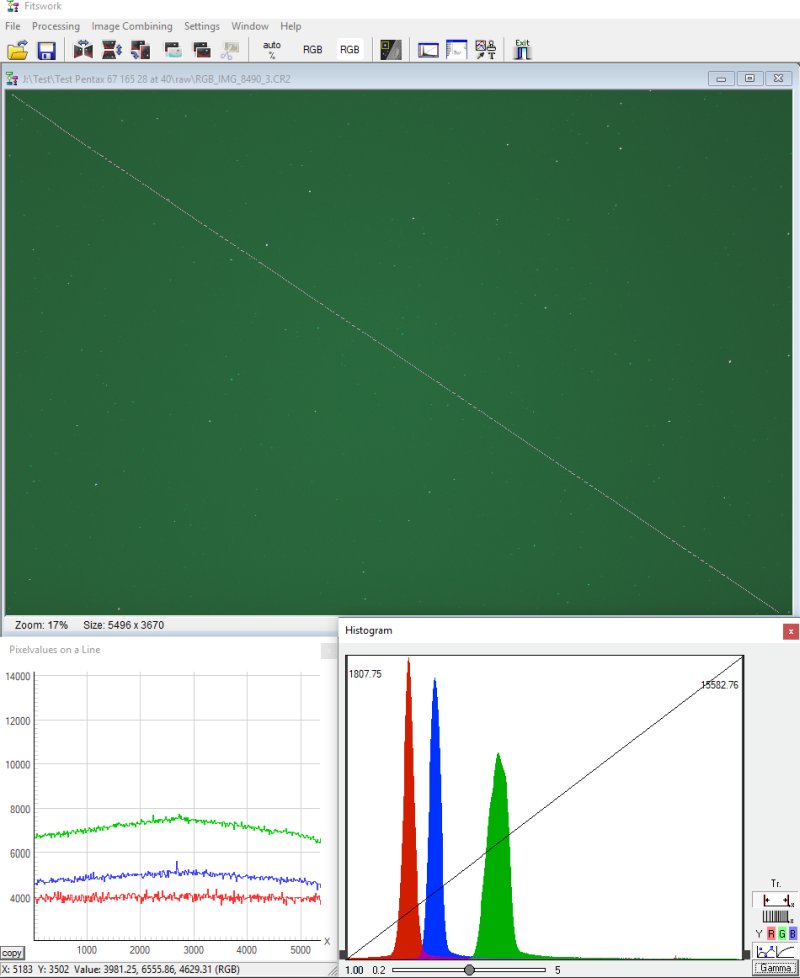
What is fantastic with this lens is that the vignetting is very low even at f/2.8. The lens is designed for a 70 x 60 mm format and a tiny full frame sensor is nothing compare to that. The green histogram is at a higher level because the sensor's has higher QE at the green wave length compare to red and blue. I normally has to set the gain about 1.8 for red and blue channel to compensate that. In this case I have set the R,G and B channel gains equal to =1.
|
3. Analyze of stacked sub exposuresNext I do a simple analyze of the stacked sub photos. The photo are flat calibrated, level adjust and has a high gamma set, slightly cropped because a small drift caused by the bad polar align. No more has been done. 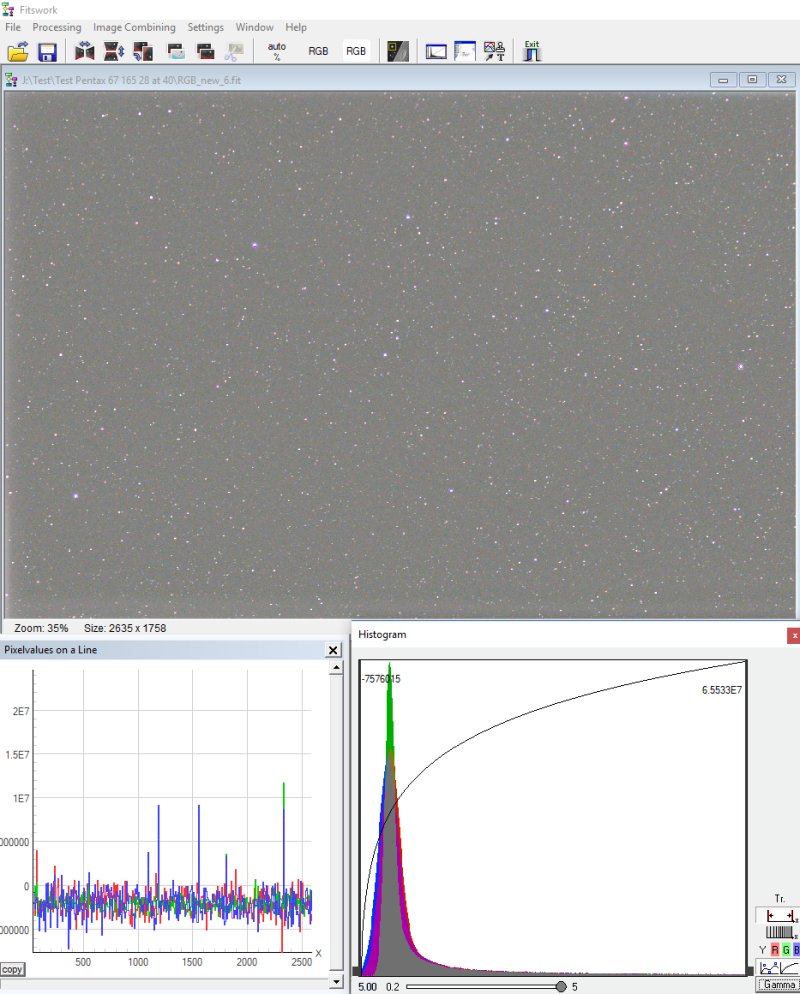
The histogram shows that the background is flat after the flat calibration. Examined in detail there is a small tilt of the background because of the uneven light pollution. The three color channels line up above each other. The red and blue channels are wider. Not perfect focus because of no APO design I think mostly are behind this. Partly maybe an effect of the high light pollution which has noise that broaden the peaks, normally more in the red spectra. Later photos taken under a darker sky shall tell what's behind. 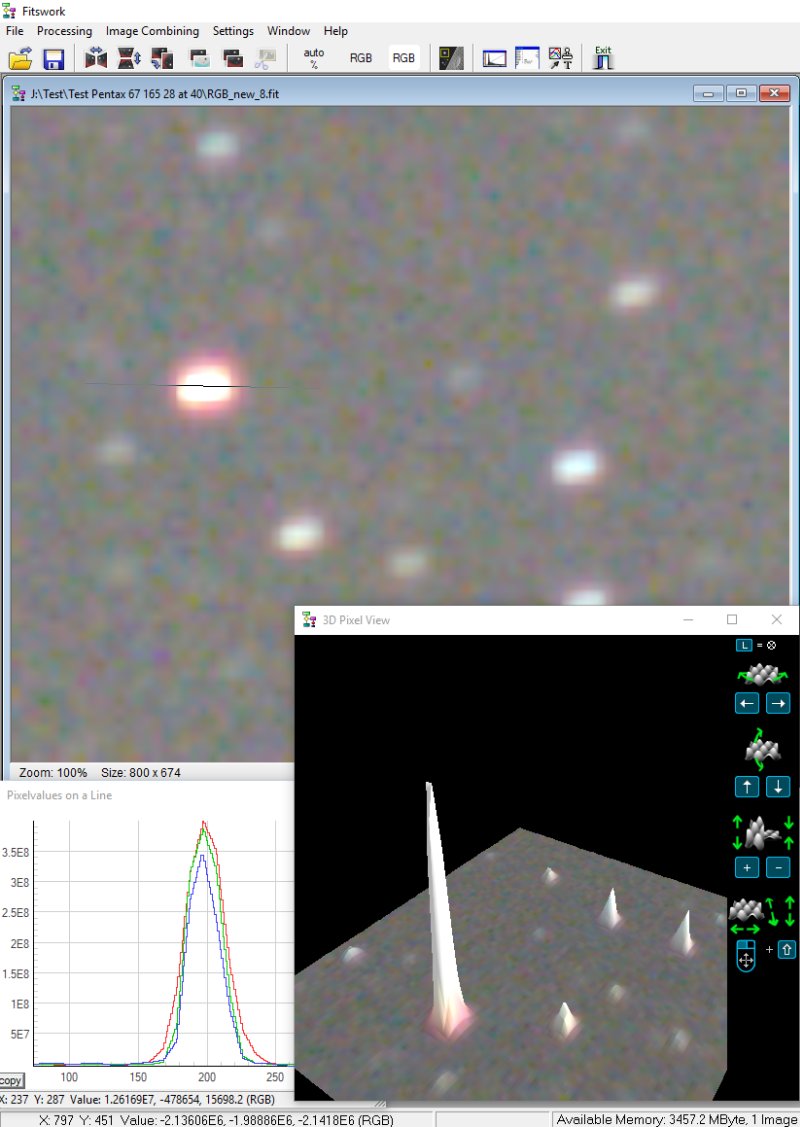
A crops around a couple of stars, one very strong, the photo is very stretched. Just want to see the peaks of the stars and if they are distorted or clipped. Looks ok, the background doesn't have any visual objects because of the light pollution and it's strong noise hide the weak details. There is one advantage of not a perfect focus, it lets the star photons spread out over many pixels and then not overexpose that as easy. It let the colors be preserved. To some degree there is possible to sharp up the stars later in the image processing. A lens with an opening like this lens at f/2.8 has a theoretical resolution just below 2.5" (arcsec) at green wavelength. The pixel scale with this camera and a 165 mm lens is 8"/pixel. The HWHM (Half Width Half Max) according to the graph above is 25 pixel or 200", this stars look to be compressed at higher levels and it's taken from the stack. A fainter star on a sub photo gives 3 pixel HWHM or 24", of course very bad. The Sigma APO lens gives about 2 pixel HWHM or 18", a perfect lens should have squeezed the star into one pixel. Maybe it could be better focused when I got more used with this lens.
Conclusion: Shall I give this maybe 40 years old construction and no APO lens a second life?
|
4. Plate solveThis photo was taken from my balcony and very light polluted. Is there any chance to see any deep sky object? I have done a plate solve with Astrometry.net where the positions for a number of deep sky objects is market. 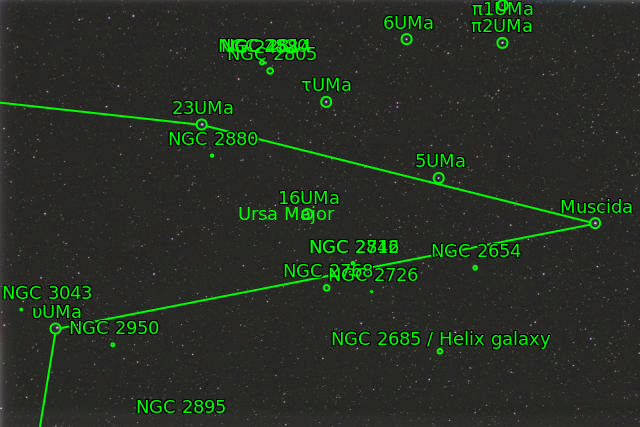 (click on the image to get a full resolution photo in a new window)
(click on the image to get a full resolution photo in a new window)
When we know where the deep sky objects are it's easier to find them.
I found: Have you tried to plate solve your own astrophotos? If not, try this:
See also this page where I compare this Pentax lens with a modern Sigma APO lens:
|
| Go Back |